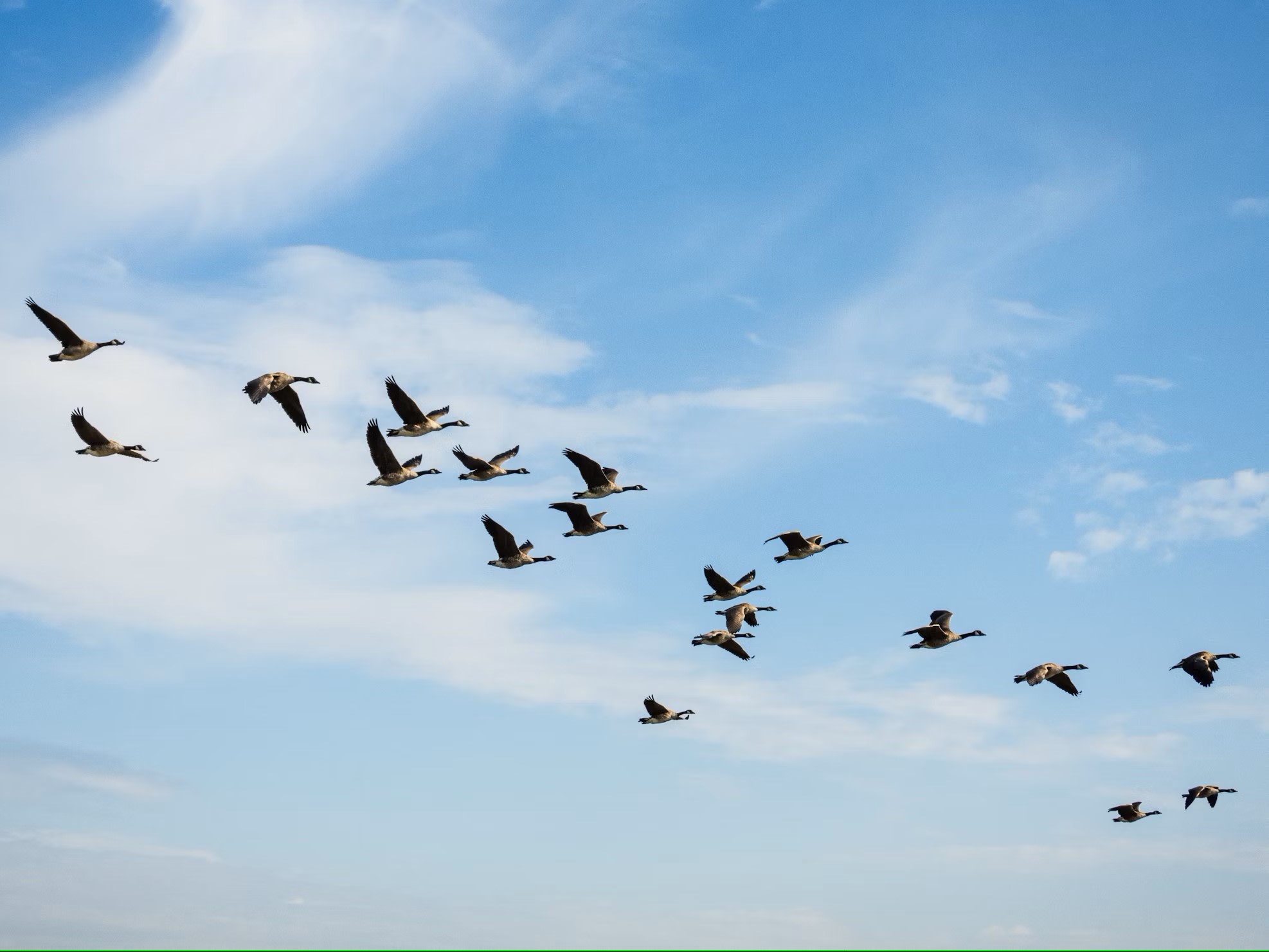
Spring is an exciting and educational time of year for several reasons. Perhaps, most notably, we are tired of being cooped up indoors when the weather is misbehaving and welcome the change! Spring, however, is also an excellent time to learn fun and interesting facts about where we live and the world at large. Our prior blog on 10 ‘Cool’ Winter Science Facts for the Season was so popular, that it inspired us to focus on the next season. Teachers on Call’s in-person and online tutoring service has rounded up a list of seven seasonal facts for spring and early summer that will help jumpstart your science learning at home.
Teachers on Call’s in-person and online tutors love to take advantage of teachable moments. We know that students are fascinated by nature and the changing of seasons. When the weather warms up in April and May, it presents a great opportunity to get outdoors and learn core subjects like math and science in new ways (like on nature walks). In this blog, we are focusing on seven fun and amazing facts for young scientists. Ready? Let’s learn!
Spring fever might be a real thing – but we don’t understand it.
Have you ever wondered if ‘spring fever’ is a real thing? The only thing we can be certain about when it comes to ‘spring fever’ is that humans (and animals too!) all experience increased energy in the spring. The ‘why’ of it, however, is a little harder to figure out. Let’s turn to science for a hypothesis.
Most scientists think it may have something to do with our melatonin production. Melatonin is sometimes called ‘the sleep hormone’ because it is released in dim light and darkness. Winter has long nights and short days. But even before spring can be felt in the air and things start warming up, one important event does happen: the days start getting longer, the farther we get from winter solstice and the closer we get to spring equinox. This may help explain a lift in moods and vitality, with more energy to engage in activities like spring cleaning!
The Great Lakes play a big part in unpredictable spring weather.
All year long, the Great Lakes, which are on or near the Canada–United States border, significantly influence the weather in regions surrounding them. Ontario borders almost all of them—Lake Ontario, Lake Erie, Lake Huron, and Lake Superior.
Large bodies of water act as vast heat reservoirs, absorbing warmth slowly during the spring and releasing it gradually in the winter. The term for the process by which big bodies of water absorb heat from the sun is called thermal inertia.
This process of heating and cooling in water happens much more slowly in water than it does in the soil and the air. Because of thermal inertia, the difference in temperatures can lead to the formation of microclimates, where weather conditions vary over relatively short distances.
In other words, as the land warms, air over it rises. As it rises, this ‘pulls’ cooler, moist air from over the lakes inland. This often results in fog, increased cloudiness, and lots of thunderstorms!
Asparagus is one of the first vegetables harvested annually in Ontario.
Asparagus alert! During late April and early May, you may notice that one fresh spring food available is asparagus. Fun fact, most Canadian asparagus is grown in fields in Southern Ontario, with the rest mainly coming from British Columbia and Quebec. Asparagus is among the first vegetables to be harvested at the start of the growing season because the plant does well in cool weather!
Did you know that asparagus is a perennial vegetable? Perennial plants of all kinds regrow year after year. Once asparagus is planted, it can produce spears for harvesting every year for up to twenty years (and sometimes longer)!
The need to replant it so seldom makes it a wonderful sustainable crop choice for farmers, because it takes less energy to grow and because it doesn’t disturb the soil nearly as much as other plants.

Spring is a time for many birds to migrate back to breed in Canada.
You may notice that there’s quite a few more birds around in the springtime! Many birds use this time of year to return to nest, have babies, and feed before they return to their wintering grounds in the fall.
Here’s some migratory birds you might catch returning home to Ontario if you go looking:
- Canada Geese
- Warblers
- Swallows
- Shorebirds
- Raptors
You might ask if robins, chickadees and cardinals are among that list of birds who fly south for the winter. The answer is no! We touched on this in one of our Winter Biology Facts posts, as least as far as robins go. Robins are nomadic, so they might move around, but they survive the cold well and have no need to move around if they have a good source of food. Cardinals and chickadees stay in their home area all year long!

If you sneeze a lot in the spring, you could be allergic to tree pollen.
The most common allergy trigger for people in the months of March, April and May tends to be tree pollen. That’s because many trees—notably birch, cedar, poplar, and maple trees—wake up from the winter and start releasing their pollen. A single birch tree can produce up to five million grains of pollen in a season, and they can travel hundreds of kilometers in the wind. You can be hours away from the tree making you sneeze!
It may be annoying to have allergies, but the pollen serves an important function for the tree. When pollen grains are carried by the wind or pollinators to the female parts of flowers or cones on other trees, they germinate, allowing the trees to produce seeds. That’s how nature makes new trees grow and helps them spread their genes.
April and May are usually when black bears ‘wake’ back up.
In our other post we talked about how there’s three different kinds of hibernation, and one of them is called torpor. While we think of bears as being ‘dead to the world’ all winter long, that is simply not true. Most bears go into torpor, and while in torpor, they will still wake up to eat or avoid danger.
Like black bears, racoons and skunks also go into torpor. But they will likely ‘wake up’ a little sooner than the bears, since they tend to share some of our urban spaces with us where it’s warmer and have lots of access to human food.
Additionally, black bears don’t give birth in the spring!
We’re used to thinking of springtime as when animals give birth to their young. While that is true for many, the black bear usually gives birth in the late months of winter, usually January or February, while they’re still in torpor and conserving energy.
Female black bears have a really interesting biological trick: after mating in the late spring or early summer, they keep their fertilized eggs in a state of suspended development until fall through a process called delayed implantation. She will only get pregnant if she has accumulated enough fat storage to sustain herself and her growing babies through the winter. It’s hard to be a mama bear. Mama bears can lose a third or more of their body weight over winter. Others typically lose only 15-25%.
The birth of cubs in the late winter is advantageous for them, because black bears are born blind, nearly hairless, and weighing less than 500g (often less than a pound). They need the rest of the winter to grow and develop, so that they’re ready to leave the den with mama bear when the weather warms up!
We hope you find many of these spring science facts as interesting as we do! Spring can still be a little cool, but there are lots of ways to enjoy the warming season. Be sure to also check out our post also on 5 Great Ways to Get Into Spring and Get Moving!
Related Articles View All
Why Modern Mining Matters: Insights from “This Is Mining: The Podcast” for Students, Parents, and Educators
When most people think about a field trip, they imagine museums, historic sites, or science centres. But for our President & CEO at Teachers on Call, Joanne Sallay, her most memorable field trip took her into Northern Ontario, straight into the heart of one of Canada’s most advanced mining operations.
Featured in The Teaching Librarian: Rock-Solid Reads That Demystify Mining for Today’s Students
In the latest edition of The Teaching Librarian - the magazine of the Ontario School Library Association - our President, Joanne Sallay, contributes an insightful article titled "The Buzz: Rock-Solid Reads to Demystify the World of Mining." In this issue, Joanne takes a unique approach to the theme Mystery @ Your Library by stepping away from fictional mysteries and instead exploring how educators can help unravel real-world mysteries across subjects and industries—particularly the often-ove...
Teachers on Call Shines in CBC Sudbury News Feature
Featured in CBC Sudbury News, discover how Teachers on Call President & CEO Joanne Sallay's participation in a mining educator tour is inspiring the next generation of STEM and skilled trades professionals.

